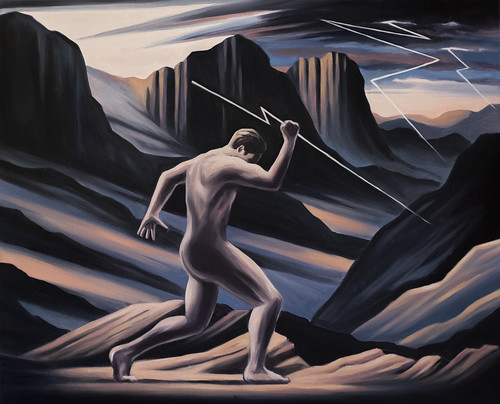Memes, reels about screaming streamers, cat’s videos, aesthetic photos and scandals: Instagram has become the amalgamation of these elements and much more, constantly integrating into our daily lives.
But what happens when this social platform is utilized as a tool for artistic exploration, promoting emerging and lesser-known artists who, in our opinion, deserve recognition?
At Parmesse, we decided to find out. You might wonder, what were the results?
We were enveloped by the thick, dreamy atmospheres depicted by Artur Grucela, a Polish painter who graciously shared his insights with us, shedding light on his art and the messages embedded within his paintings.


The art of Artur Grucela
Born in ’87, his relation with drawing began at kindergarten and will be at the elementary school that he’ll come closer to paintings: it’s there that he’ll know that he wants to be a painter all his life.
He creates breathtaking naturalistic landscapes where pristine nature often takes center stage, despite the presence of human figures whose faces remain undefined or concealed, rendering them as universal characters for better viewer identification.
Artur Grucela draws inspiration from various artists, too numerous to name, though notable influences include Blake, Dorè, Botticelli, Bocklin, and Von Stuck.
These artists, hailing from previous eras, evoke aesthetic values that transport us not merely to earlier periods but to distant, nostalgic landscapes no longer prevalent in our society.
Artur acknowledges being somewhat stuck in the past, blending his paintings’ sceneries based on the environments surrounding him: as evident on his website and Instagram account, the mood varies between night, sunny, or sunset scenes, symbolizing his emotions during the painting process, all shrouded in a persistent mist of melancholy.

Artur Grucela and the escape from reality
His paintings serve as mirrors to his soul, offering viewers an opportunity to momentarily escape reality.
However, this escape is never complete, as the depicted scenes oscillate between magical and idyllic, signifying the fleeting freedom of escape, and dark and anxious, reflecting the moment of lucidity when the viewer realizes they haven’t truly escaped anywhere, founding himself in the same place as before, a place that he or she doesn’t really belongs to.
The sensation of not belonging is accentuated by the human figures, seemingly ill-fitting within the scenery, like mismatched puzzle pieces forced together, suggesting they shouldn’t be there.
Artur’s deep fascination with Greek poses and classical and biblical events leads him to reinterpret them in his unique style, ranging from moments of relaxation and everyday life to characters immersed in surrender or myth-based scenarios.
Yet, the underlying message remains consistent: there are places where humanity cannot and will not ever belong.


What does his art want to convey?
His paintings reflect an archaic and desperate quest for a place of natural integration, a pursuit that spans various eras up to the present day.
Artur Grucela has recenlty completed the exhibition Mystery Keepers at Warsav: a rich experience of comparison with other artists.
We can only wish the best for him and for his artistic career, following its development with interest and inviting you to follow him on his social, in the hope his works have moved us as they have done for us.




